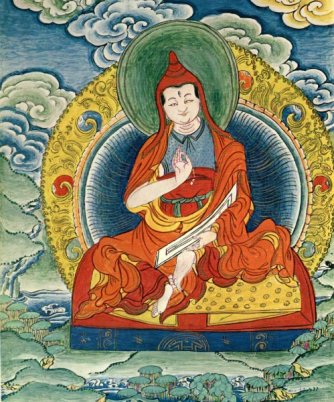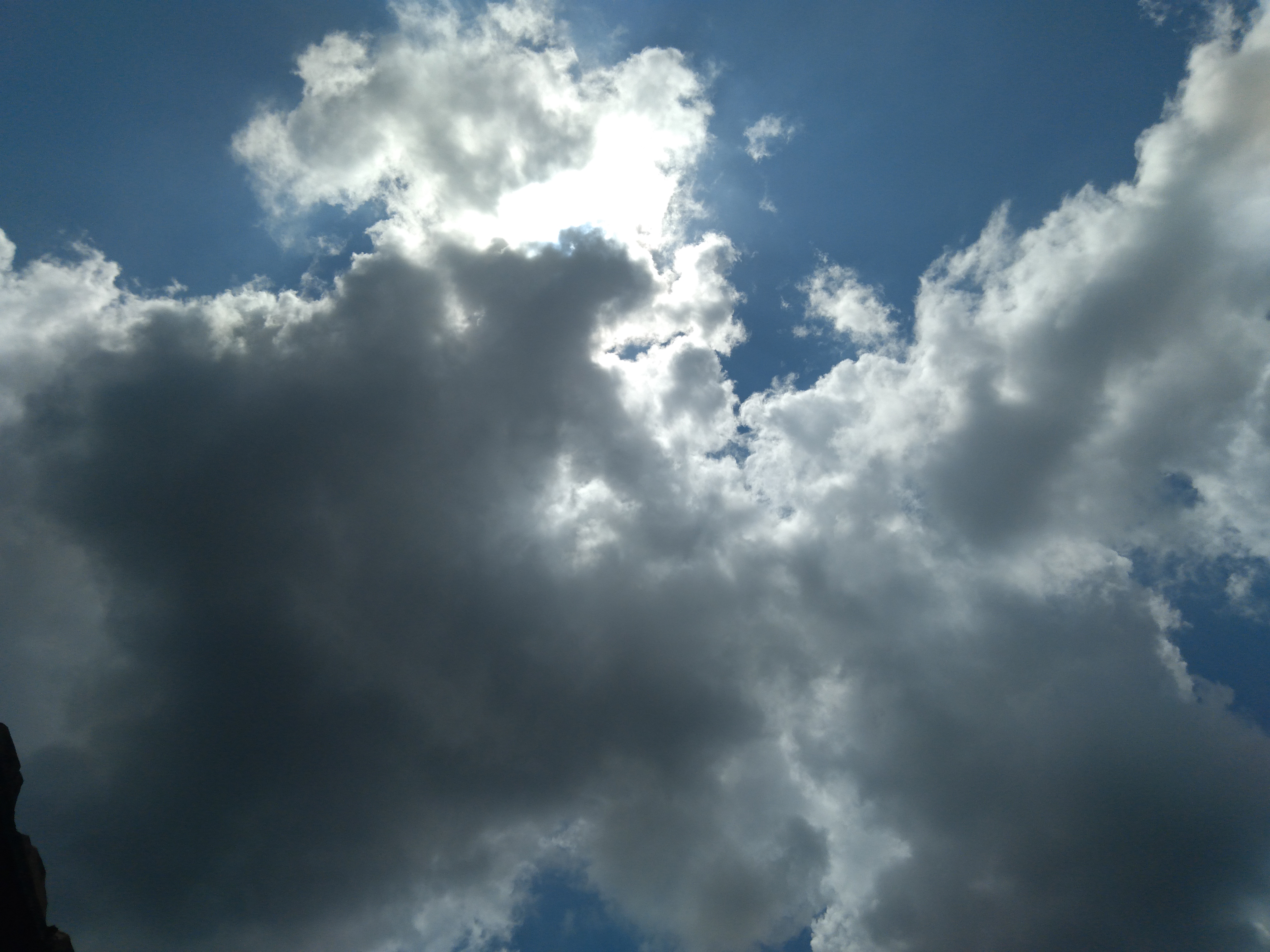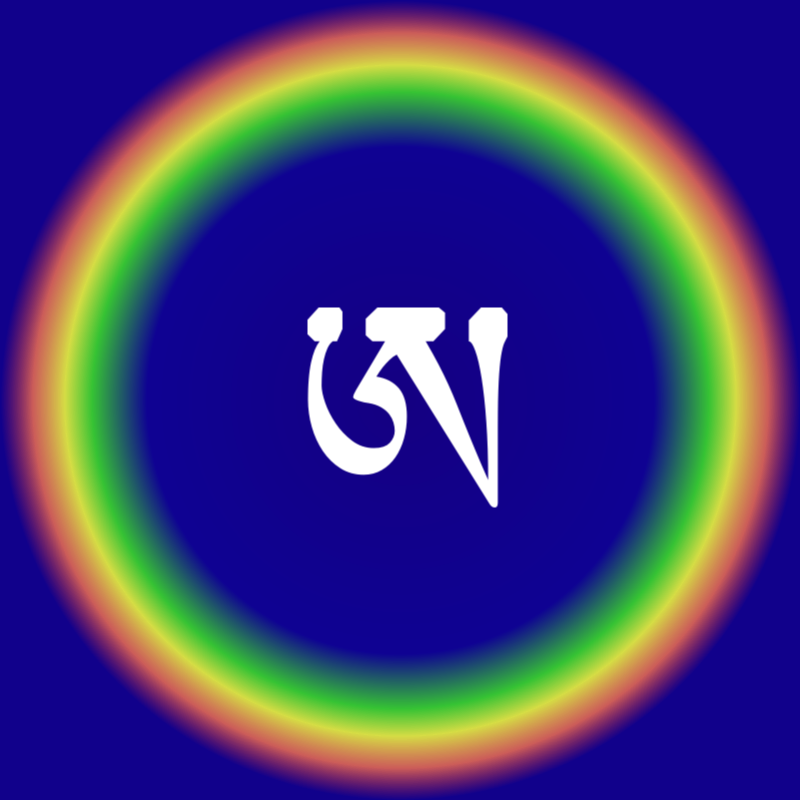|
Trekchö
In Dzogchen, ''trekchö'' (''khregs chod'') means "(spontaneous) cutting of tension" or "cutting through solidity." The practice of ''trekchö'' reflects the earliest developments of Dzogchen, with its admonition against practice. In this practice one first identifies, and then sustains recognition of, one's own innately pure, empty awareness. The main trekchö instructions in the Lamrim Yeshe Nyingpo state "This instant freshness, unspoiled by the thoughts of the three times; You directly see in actuality by letting be in naturalness." Definition According to Malcolm Smith, ''trekchö'' can also be interpreted as meaning "an undone bundle", "like a hay bale with the twine." In Vimalamitra's ''Great Commentary'', ''trekchö'' is defined as "the system of buddhahood through immediate liberation as a directly perceived realization that is not connected to appearances," and states that this is "the superior intimate instruction for the lazy who attain buddhahood instantly without med ... [...More Info...] [...Related Items...] OR: [Wikipedia] [Google] [Baidu] |
Sky Gazing (Dzogchen)
In Dzogchen, sky gazing (Wylie transliteration, Wylie: ''nam mkha' ar gtad'', THDL Simplified Phonetic Transcription, THDL: namkha arté) is one of the core practices of ''trekchö'' as well as ''tögal''. It is part of the Nyingma school of Tibetan Buddhism and Bon. Detailed instructions on the practice are provided by the Nyingma teacher Tarthang Tulku, among others. The result of the practice is the rainbow body. History of the sky-gazing practice The most comprehensive study of the Sky-gazing meditation known as ''thod rgal'' has been written by Flavio A. Geisshuesler. Although the term ''thod rgal'' is generally translated as "Direct Transcendence" or "Leap Over," Geisshuesler argues that the expression really means "Skullward Leap" as it consists of the Tibetan words ''thod'' ("above," "over," but also "head wrapper," "turban," "skull") and ''rgal'' ("to leap over"). In the larger Tibetan cultural area, it is the most elevated part of the human body—the skull or, its exte ... [...More Info...] [...Related Items...] OR: [Wikipedia] [Google] [Baidu] |
Semde
Semde (; Sanskrit: , "mind division", "mind class" or "mind series" is the name of one of three scriptural and lineage (Buddhism), lineage divisions within the Dzogchen (Great Perfection) tradition. The Nyingma school of Tibetan Buddhism traditionally classifies its Dzogchen teaching into three main divisions: Semde, Longdé (Space Series) and Menngagde (Secret Instruction Series). Semde texts are mostly said to be translations by figures of History of Tibetan Buddhism#First dissemination (7th–9th centuries), the early transmission (7th–9th centuries) of Buddhism to Tibet like Sri Singha, Śrī Siṅgha, Vairotsana and Vimalamitra. These texts emphasize the "awakened mind" (Tibetan: ''byang-chub-kyi sems'', Skt. ''bodhicitta''), which is the true nature of the mind and is essentially pure and perfect, just like Buddhahood. Semde texts critique tantric practice as being based on effort, and instead promote simple and effortless contemplation of the mind and its Emptiness (Buddhi ... [...More Info...] [...Related Items...] OR: [Wikipedia] [Google] [Baidu] |
Tögal
In Dzogchen, ''tögal'' () literally means "crossing, surpassing the skull." It is sometimes translated as 'leapover,' 'direct crossing,' or 'direct transcendence.' ''Tögal'' is also called "the practice of vision," or "the practice of the Clear Light" ('' od-gsal''). Definition Vimalamitra's ''Great Commentary'', defines ''tögal'' as "the practice of the direct perception of pristine consciousness" which is for "the diligent who gradually attain buddhahood through meditation." Chökyi Nyima Rinpoche glosses the term as "to proceed directly to the goal without having to go through intermediate steps." Jigme Lingpa follows Longchenpa in seeing the visionary practice of ''tögal'' as the highest level of meditation practice. ''Tögal'' is also called "the practice of vision", or "the practice of the Clear Light ('' od-gsal'')". Practice ''Tögal'' is practiced in a completely dark setting or through sky gazing. The practices engage the subtle body of psychic channels, winds ... [...More Info...] [...Related Items...] OR: [Wikipedia] [Google] [Baidu] |
Lukhang Mural 9
Lukhang (, residence of Nagas), formally Dzongyab Lukhang (), residence of Nagas, lords of the castle and administered territory /nowiki>) is the name of a secret temple of Lozang Gyatso, 5th Dalai Lama. Three walls of the temple are covered with murals of yogis engaged in their exercises. * One wall of murals illustrates a commentary by Longchenpa on a Dzogchen tantra '' Rigpa Rangshar'', interpreted according to the 5th Dalai Lama's experience of practice. The murals show characteristic visions of the secret practice of tögal. * Another wall shows eight manifestations of Guru Padmasambhava and eighty four main Mahasiddhas. * The third wall illustrates positions and movements of Yantra Yoga. The temple is situated on a small island on a lake behind the Potala palace in Lhasa Lhasa, officially the Chengguan District of Lhasa City, is the inner urban district of Lhasa (city), Lhasa City, Tibet Autonomous Region, Southwestern China. Lhasa is the second mos ... [...More Info...] [...Related Items...] OR: [Wikipedia] [Google] [Baidu] |
Dzogchen
Dzogchen ( 'Great Completion' or 'Great Perfection'), also known as ''atiyoga'' ( utmost yoga), is a tradition of teachings in Indo-Tibetan Buddhism and Bön aimed at discovering and continuing in the ultimate ground of existence. The goal of Dzogchen is the direct experience of this basis, called (Sanskrit: ). There are spiritual practices taught in various Dzogchen systems for discovering . Dzogchen emerged during the first dissemination of Buddhism in Tibet, around the 7th to 9th centuries CE. While it is considered a Tibetan development by some scholars, it draws upon key ideas from Indian sources. The earliest Dzogchen texts appeared in the 9th century, attributed to Indian masters. These texts, known as the Eighteen Great Scriptures, form the "Mind Series" and are attributed to figures like Śrī Siṅgha and Vimalamitra. Early Dzogchen was marked by a departure from normative Vajrayāna practices, focusing instead on simple calming contemplations leading to a di ... [...More Info...] [...Related Items...] OR: [Wikipedia] [Google] [Baidu] |
Karma Chagme
The name Karma Chagme refers to a 17th-century Tibetan Buddhist (Vajrayāna) lama and to the tülku (reincarnate lama) lineage which he initiated. Including the first, seven Karma Chagme tülkus have been recognized. The Neydo Kagyu () sub-school of the Karma Kagyu was established by the first Karma Chagme, Rāga Asya. First Karma Chagme, Rāga Asya Karma Chakme (born Wangdrak Sung; ordained Karma chags med; alias Rā-ga a-sya; 1613-1678) was born in Salmo Gang (), a place near Riwoche () in the district of Ngoms in Kham. His father, Pema Wangdrak () was an established tantric siddha from the ruling lineage of Dong khachö () and his mother Chökyong Kyi () was descended from the family line of Gyuli. Said to have been the reincarnation of Chokro Lü Gyeltsen () and of Prince Sad na legs, his father gave his son the tertön Ratna Lingpa longevity empowerments during his birth. Karma Chakme was trained by his father from the age of six in reading and writing, as well as “white ... [...More Info...] [...Related Items...] OR: [Wikipedia] [Google] [Baidu] |
Mahāmudrā
Mahāmudrā (Sanskrit: महामुद्रा, , contraction of ) literally means "great seal" or "great imprint" and refers to the fact that "all phenomena inevitably are stamped by the fact of Prajnaparamita, wisdom and Śūnyatā, emptiness inseparable". Mahāmudrā is a multivalent term of great importance in later Indian Buddhism and Tibetan Buddhism which "also occurs occasionally in Hinduism, Hindu and Tangmi, East Asian Buddhist esotericism." The name also refers to a body of teachings representing the culmination of all the practices of the Sarma (Tibetan Buddhism), New Translation schools of Tibetan Buddhism, who believe it to be the quintessential message of all of their sacred texts. The practice of Mahāmudrā is also known as the teaching called "Sahajayoga" or "Co-emergence Yoga". In Tibetan Buddhism, particularly the Kagyu school, Sahaja Mahāmudrā is sometimes seen as a different Buddhist vehicle (Yana (Buddhism), yana), the "Sahajayana" (Tibetan: ''lhen c ... [...More Info...] [...Related Items...] OR: [Wikipedia] [Google] [Baidu] |
Lamrim Yeshe Nyingpo
Lamrim Yeshe Nyingpo is a terma revealed by Chokgyur Lingpa in the nineteenth century. ''The Light of Wisdom'' (1999) is an extended exegesis on the ''Lamrim Yeshe Nyingpo'' by Jamgön Kongtrül the Great, one of the eminent Buddhist masters of nineteenth-century Tibet. References *Padmasambhava & Kongtrül, Jamgön (transl. Erik Pema Kunsang) (1999). ''The Light of Wisdom (Vol. 1).'' Boudhanath: Rangjung Yeshe Publications. (A translation of the Lamrim Yeshe Nyingpo)Introduction: context and lineages for Lamrim Yeshe Nyingpo {{Buddhism topics Tibetan Buddhist texts Vajrayana ... [...More Info...] [...Related Items...] OR: [Wikipedia] [Google] [Baidu] |
Pointing-out Instruction
The pointing-out instruction () is an introduction to the nature of mind in the Tibetan Buddhist lineages of Mahāmudrā and Dzogchen. In these traditions, a lama gives the pointing-out instruction in such a way that the disciple successfully recognizes the nature of mind. Terminology In the Mahāmudrā tradition, pointing-out instruction () is also referred to as "pointing out the nature of mind" (), "pointing out transmission", or "introduction to the nature of mind". In the Dzogchen tradition, the pointing out instructions are often called the “introduction to awareness” () or "sems khrid," pronounced "sem tri". Senior Shambhala Buddhist teacher Jeremy Hayward describes this as In the Mahāmudrā tradition, the mind pointed out is called "ordinary mind" ( ''tamel gyi shépa'', Sanskrit: *''prākṛita-jñana''). As the Dzogchen Ponlop Rinpoche explains, In the Dzogchen tradition, knowledge of the basis pointed out is called '' rigpa'' (, Sanskrit: *''vidya''). ... [...More Info...] [...Related Items...] OR: [Wikipedia] [Google] [Baidu] |
Ngöndro
In Tibetan Buddhism, Ngöndro (, ) refers to the preliminary, preparatory or foundational practices or disciplines (Sanskrit: sādhanā) common to all four schools of Tibetan Buddhism and also to Bon. They precede deity yoga. The preliminary practices establish the foundation for the more advanced and esoteric Vajrayana sādhanā which are held to engender realization and the embodiment of Dzogchen, Heruka and Mahamudra. Nevertheless, Vajrayana masters are careful to point out that "foundational" does not mean "lesser," that the practice of Ngöndro is a complete and sufficient practice of the spiritual path, and that it can take the practitioner all the way to full enlightenment. In addition to what is generally denoted by the term ''ngöndro'', preparatory practices may also be prescribed for senior and advanced sadhana, e.g.: "differentiating saṃsāra and nirvāṇa" () is the preparatory practice for trekchö or "cutting through to primordial purity." Outer and inner ... [...More Info...] [...Related Items...] OR: [Wikipedia] [Google] [Baidu] |
Yeshe Lama
Yeshe () is a Tibetan term meaning wisdom and is analogous to jnana in Sanskrit. The word appears for example in the title of the ''Lamrim Yeshe Nyingpo'', a Vajrayana Buddhist sacred scripture that records oral teachings of Padmasambhava in the 9th century, and in the name of Yeshe Walmo, a deity of the Tibetan religion of Bon. It is used as a unisex given name by Tibetans and Bhutanese people, also spelled Yeshey, Yeshay, or Yeshi. People with this name include: Religious figures * Yeshe De (Jnanasutra, ), a Tibetan Vajrayana Dzogchenpa who was a disciple of Sri Singha *Yeshe Tsogyal (757–817), a semi-mythical female deity or figure of enlightenment (dakini) in Tibetan Buddhism * Nubchen Sangye Yeshe (9th century), one of the twenty-five principal students of Guru Padmasambhava *Yeshe-Ö (c. 959–1040), the first notable lama-king in Tibet * Yeshe Rinchen (1248–1294), Imperial Preceptor (Dishi) of the Yuan dynasty * Lobsang Yeshe, 5th Panchen Lama (1663–1737) * Yeshe Dorj ... [...More Info...] [...Related Items...] OR: [Wikipedia] [Google] [Baidu] |
Rigpa
In Dzogchen, ''rigpa'' (; Skt. Vidya (Knowledge), vidyā; "knowledge") is knowledge of the Ground (Dzogchen), ground. The opposite of ''rigpa'' is ''ma rigpa'' (''Avidyā (Buddhism), avidyā'', ignorance). A practitioner who has attained the state of ''rigpa'' and is able to rest in it continuously is called a ''Rigdzin'' or ''Rigma'' (see Vidyadhara (Buddhism), Vidyadhara), which may be used as a title either pre- or post-nominally. ''Rigpa'' (knowledge) ''Rigpa'' (Sanskrit: ''vidyā'', 'knowledge') is a central concept in Dzogchen. According to Ācārya Malcolm Smith: ''Rigpa'' is the knowledge of the Ground (Dzogchen), ground. It has also come to mean the 'pristine awareness' that is the Ground (Dzogchen), fundamental ground itself. Erik Pema Kunsang translates a text which provides basic definitions of ''rigpa'' and ''ma rigpa'' in a Dzogchen context: Rigpa has two aspects, namely ''kadag'' and ''lhun grub''. ''Kadag'' means "purity" or specifically "primordial purity". ... [...More Info...] [...Related Items...] OR: [Wikipedia] [Google] [Baidu] |





